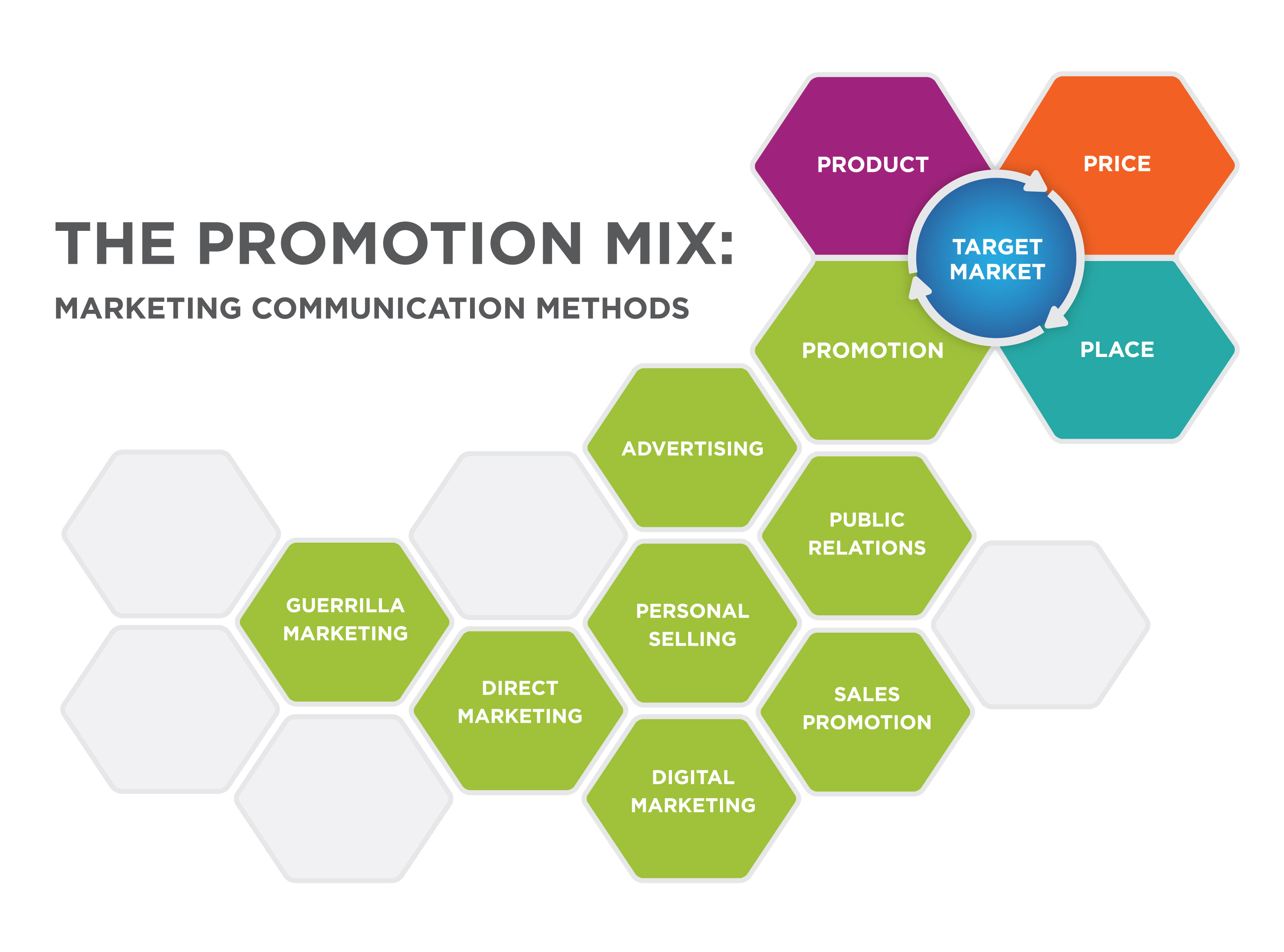Seven common methods of marketing communication are described below:

- Advertising: Any paid form of presenting ideas, goods, or services by an identified sponsor. Historically, advertising messages have been tailored to a group and employ mass media such as radio, television, newspaper, and magazines. Advertising may also target individuals according to their profile characteristics or behavior; examples are the weekly ads mailed by supermarkets to local residents or online banner ads targeted to individuals based on the sites they visit or their Internet search terms.
- Public relations (PR): The purpose of public relations is to create goodwill between an organization (or the things it promotes) and the “public” or target segments it is trying to reach. This happens through unpaid or earned promotional opportunities: articles, press and media coverage, winning awards, giving presentations at conferences and events, and otherwise getting favorable attention through vehicles not paid for by the sponsor. Although organizations earn rather than pay for the PR attention they receive, they may spend significant resources on the activities, events, and people who generate this attention.
- Personal selling: Personal selling uses people to develop relationships with target audiences for the purpose of selling products and services. Personal selling puts an emphasis on face-to-face interaction, understanding the customer’s needs, and demonstrating how the product or service provides value.
- Sales promotion: Sales promotions are marketing activities that aim to temporarily boost sales of a product or service by adding to the basic value offered, such as “buy one get one free” offers to consumers or “buy twelve cases and get a 10 percent discount” to wholesalers, retailers, or distributors.
- Direct marketing: This method aims to sell products or services directly to consumers rather than going through retailer. Catalogs, telemarketing, mailed brochures, or promotional materials and television home shopping channels are all common traditional direct marketing tools. Email and mobile marketing are two next-generation direct marketing channels.
- Digital marketing: Digital marketing covers a lot of ground, from Web sites to search-engine, content, and social media marketing. Digital marketing tools and techniques evolve rapidly with technological advances, but this umbrella term covers all of the ways in which digital technologies are used to market and sell organizations, products, services, ideas, and experiences.
- Guerrilla marketing: This newer category of marketing communication involves unconventional, innovative, and usually low-cost marketing tactics to engage consumers in the marketing activity, generate attention and achieve maximum exposure for an organization, its products, and/or services. Generally guerrilla marketing is experiential: it creates a novel situation or memorable experience consumers connect to a product or brand.